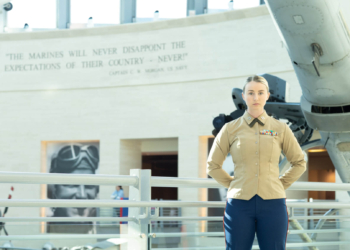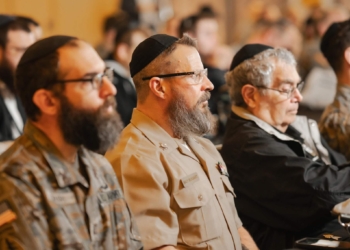When Army Maj. Kari Hadley saw a photo of a long-lashed, almond-eyed 7 year old living in an Armenian orphanage, her heart soared. This girl, she knew, was meant to be her daughter through adoption.
But then she saw the price tag of an international adoption — approximately $30,000 to $35,000 — and her heart sank. The first payment to the adoption agency alone was a steep $8,000. Even with adoption grants from nonprofit organizations, how could the Hadleys possibly afford the overall costs?
The answer, at least partially, came from the military: a post-adoption $2,000-per-child reimbursement program via the Department of Defense. Eligible military families can apply for the reimbursement once an adoption is finalized.
Hadley learned about the program through her training as a JAG. While stationed at Redstone Arsenal, Alabama, she realized it could help defray the costs of adopting her, now, daughter, Tess.
“It was a great help returning from adoption, when we had all the travel bills,” Hadley said. “[The reimbursement] came at a much-needed time.”
Practical precedence

Hadley’s experience is a prime example of why the DOD instituted the program through the National Defense Authorization Act for Fiscal Years 1992 and 1993. The U.S. military recognizes the desire of many of its members to expand their families through adoption. They also recognize that the costs of lawyers, agency fees and travel expenses can be prohibitive.
Since 1999, when the government began tracking program numbers, approximately 2,500 reimbursements have been granted, according to Chief of Naval Personnel spokesman Lt. Rick Moore. So far, 36 adoptive families have taken advantage of the $2,000 per child in 2019, while 123 reimbursements are typically granted in any given year.
Pentagon spokeswoman Air Force Lt. Col. Carla Gleason forecasts that the post-adoption monies for military households will continue, at least for now. “We are not aware of anything that would lead us to believe that the program won’t continue,” she said.
That’s a big relief for future adoptive families in the service, who often need as much financial assistance as possible to complete an adoption, whether domestic or international. Even stepchild adoptions — which are also covered under this reimbursement program — can run as much as $3,000, according to adoption.org.
As an active-duty military member (now retired), Hadley knew that she — as well as Reserve or National Guard members who are called to active duty for 180 or more consecutive days — qualified for the program. There are other rules, too.
For example, the adoption must be of a minor child. If multiple kids are adopted within the same calendar year, the reimbursements cap at $5,000. Married military members still only qualify for one grant. One must complete DD Form 2675 within two years of the adoption’s finalization, or, if the child is from overseas, within two years of receiving the American Certificate of Citizenship. And the program won’t work if the military parent(s) ceases active duty before the adoption is finalized (See exact rules here).
Applicants can usually get more information and assistance with the forms at their base’s family support center and legal, finance or personnel offices. Once completed, the applications head to the Defense Finance and Accounting Service in Cleveland, Ohio. Most reimbursements are made within four to six weeks.
Hadley completed the application and was paid via direct deposit within one pay cycle. “It was way easier than any adoption paperwork!” she laughed.
Building families

Connie and Jude* are an Army National Guard family living in the Southwest. During the process to bring home their toddler daughter, they heard about the reimbursement program from an internet search and an adoption consultant.
The couple realized the $2,000 would allow them to make a larger payment on their adoption loan from USAA. Once the domestic adoption was finalized and Jude hit the 180 required days on deployment, they filled out the paperwork and received the money approximately one month later.
Since then, Connie has met multiple military families interested in adoption who had never heard of the program, or didn’t realize they qualified. She frequently shares helpful details with them, including which form to fill out.
A quick poll of two military adoption groups on Facebook shows that Connie’s experience is not unique. Several active-duty families in various stages of adoption from one group, for example, had no idea the program existed.
“Adoption is love and wonderful, but not everyone can afford to do a private adoption,” Connie said. “When we were trying to figure out the cost for adoption, we were beyond grateful to see this program was out there.”
The value of the reimbursement is simple yet substantial, Hadley says. The reimbursement is not just about mere money, but a moral show of support for uniquely growing military households.
“This [program] is a great help to military families,” she said.
Safe in her forever family’s arms, Tess — and thousands of other military children like her — agrees.







































